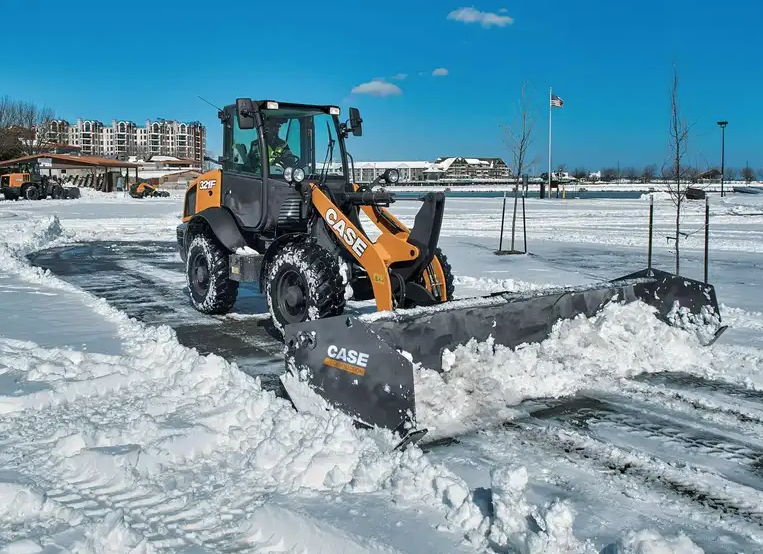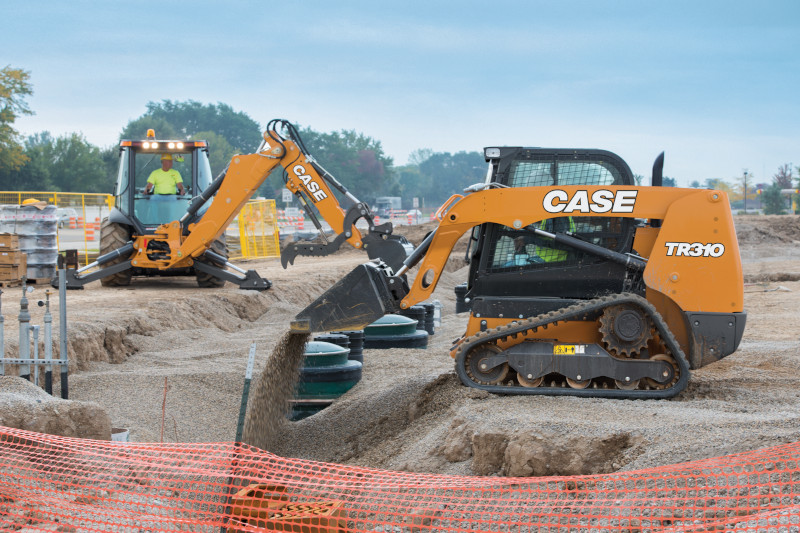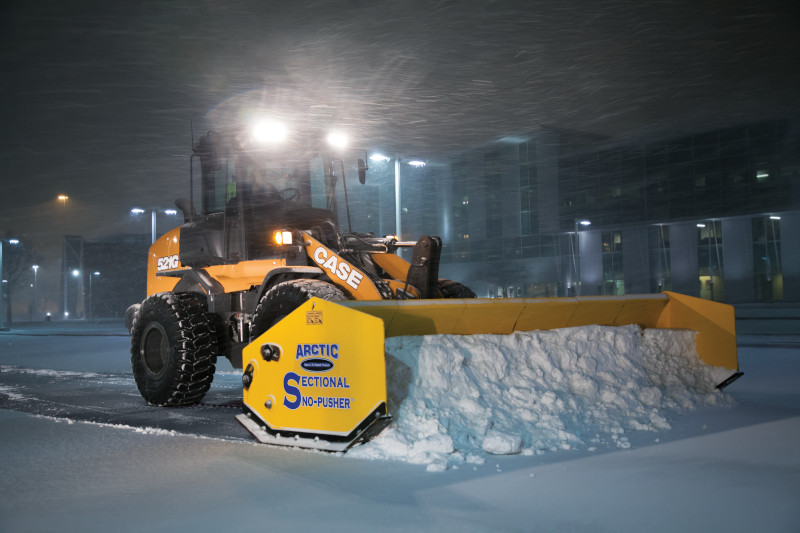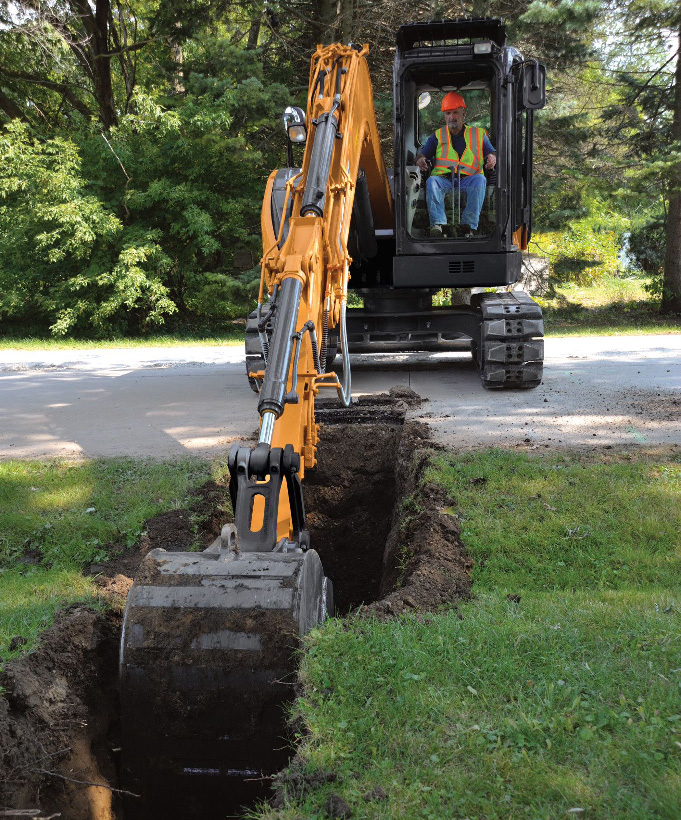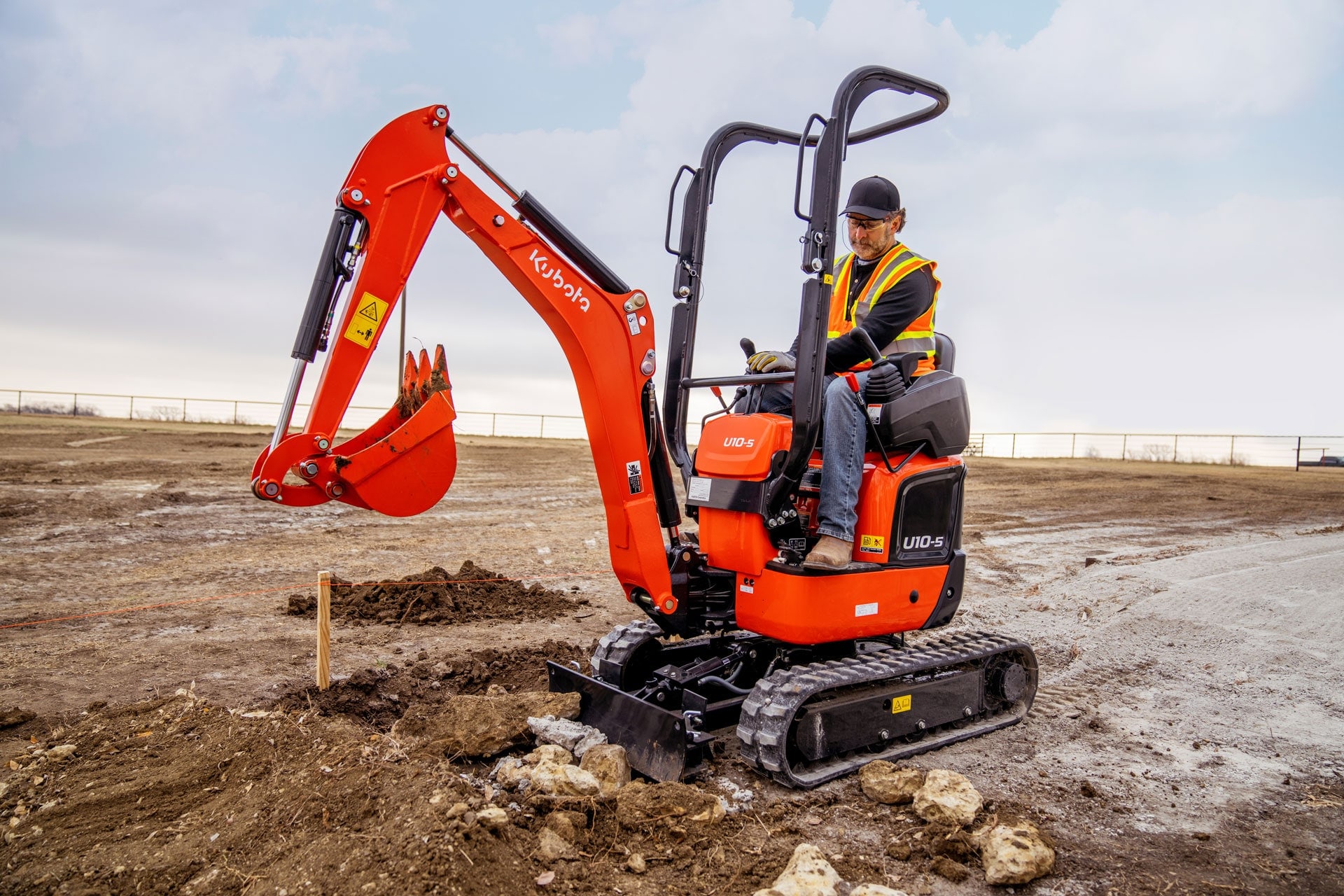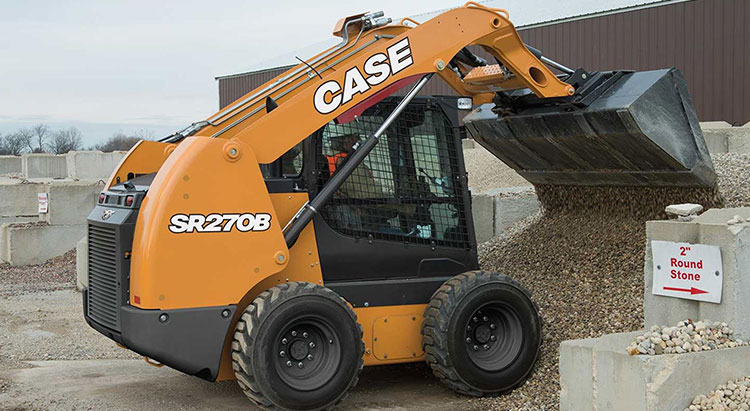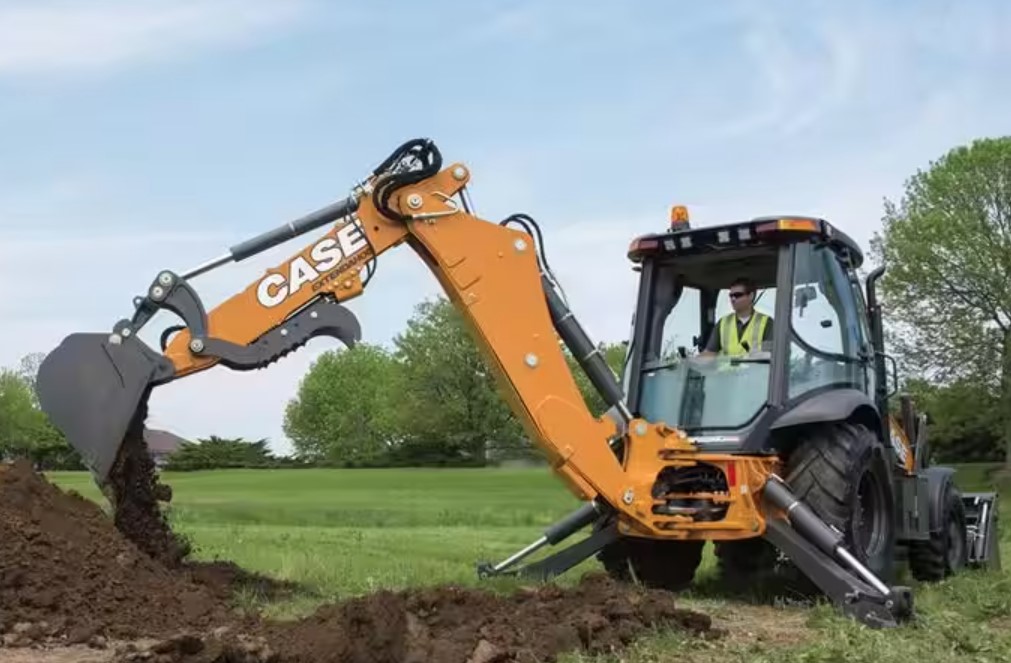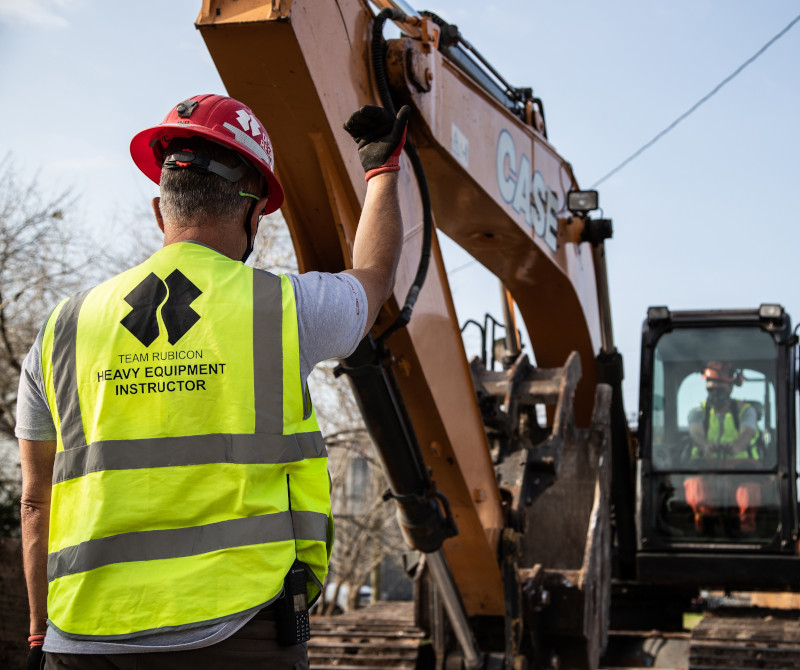Blog
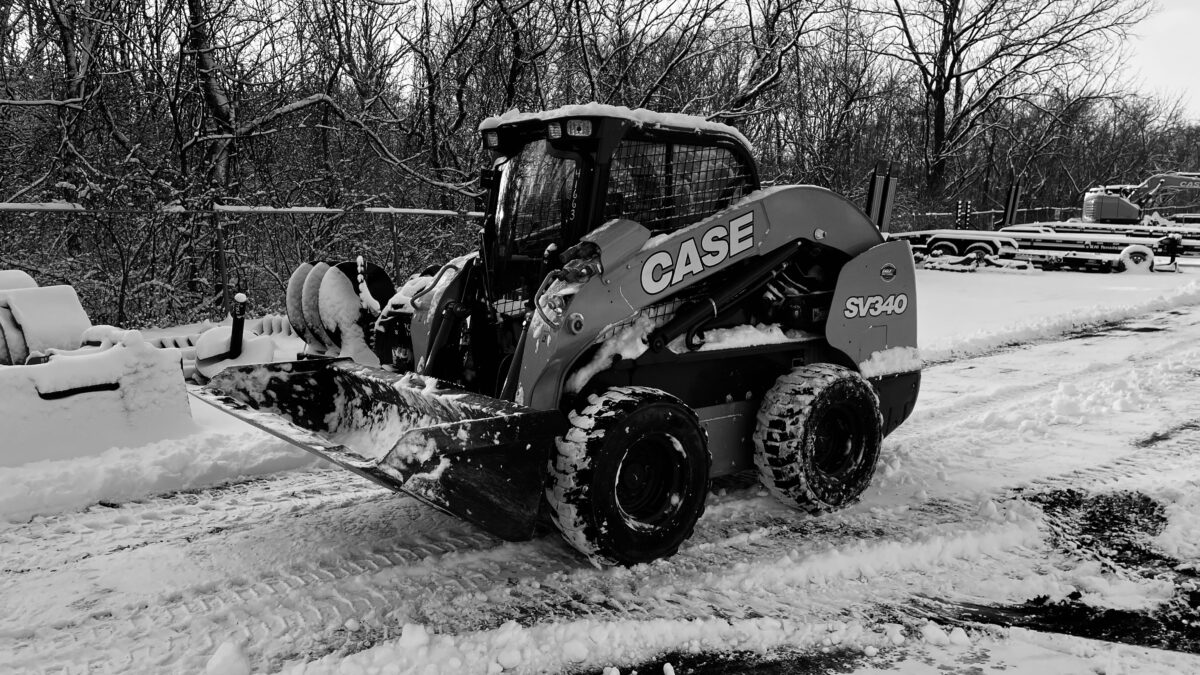
Cold Weather Tips: Protecting Your Construction Equipment in Winter
November 21, 2022Construction work continues, even in the coldest weather. But when the icy winds of winter begin to blow through the work site, the wisest construction professionals know it’s time to make proactive adjustments in how they manage and maintain their heavy equipment. Cold weather can seriously affect the safe operation and durability of your gear without adequate preparation. You run the risk of seriously damaging your machines if you fail to take the appropriate safety measures.
Do you have a maintenance plan in place for the winter ahead? In this article, we take a closer look at cold weather care and maintenance, with a few tips and tricks to help you keep your equipment running smoothly during even the coldest winter months.
CHECK YOUR TIRES REGULARLY
One of the most important functions of active heavy construction equipment is mobility: the ability to keep moving, even under the toughest of conditions. This is especially the case with wheeled equipment, where the tires are an essential component that keeps everything rolling along. But cold weather can be extremely tough on tires—especially if your machine uses solid tires. Even the most durable rubber can be vulnerable to serious damage at lower temperatures. The cold winter months contribute greatly to the risk of chunking, cracking, and extremely uneven wear for solid tires on any machine.
Air tires aren’t immune to cold weather, either. Cold temperatures can really play havoc with the air pressure of tubed tires by causing the air inside the tire to compress. Tire pressure is known to decrease by one psi for every 10 degrees Fahrenheit drop in temperature. This may cause under-inflated tires. Tires that are under-inflated cause a reduction in fuel economy by up to 0.2% for each psi of average pressure. They also experience uneven wear, which can affect traction, steering, and alignment. Tires that are dangerously low present a serious safety risk, resulting in a blowout.
No matter the season or temperature, it’s always a smart move to regularly check your vehicle tires to ensure they are in good condition. Verify that all tires are properly inflated and ready for service, taking the time to thoroughly inspect each tire for extreme wear, cracking, chunking, or any other visual damage. Between uses you should regularly inspect and clean out the tire treads as needed, to help avoid future problems and increase their working lifespan.
INSPECT AND MAINTAIN YOUR EQUIPMENT’S UNDERCARRIAGE
Throughout the course of your equipment’s life, undercarriage maintenance will probably wind up consuming a sizable portion of your overall maintenance expenses. Maintenance is especially crucial when operating your equipment in extreme cold, under muddy and snowy winter conditions.
Take proper care to keep the underside of your equipment free of any accumulated mud, snow, muck, or trash. Regularly clean and inspect the undercarriage thoroughly for any worn or loosened parts, including the brushings, idlers, rollers, pins, and shoes. Change or tighten them if required.
If your equipment is tracked, regularly inspect and adjust the track assembly in accordance with the recommended manufacturer standards, taking special care to maintain the track’s tension and adjustment. Always keep in mind that machinery operating on soft, muddy, or snowy surfaces might need to be kept under a looser tension than machinery operating on hard-packed surfaces.
KEEP TRACK OF YOUR FLUID LEVELS
Cold weather is extremely hard on the fluid systems of heavy equipment and vehicles. Seals and joints are subject to expansion and shrinkage, and friction is increased when oil thickens in the cold, becoming less fluid. Any higher-viscosity oils will require more time to warm up to a working temperature and flow smoothly. and flow smoothly. If you desire to minimize this factor so you can start working more quickly after a cold start, you should consider selecting an oil viscosity level that best matches the current ambient temperature.
Even when the external temperature is cold, the cooling system of your equipment is still essential to keep the machine running. The cooling system additionally prevents corrosion, lubricates shaft seals, and raises the engine boiling point temperature, all while preventing the engine from freezing or seizing up. In most situations, a 50/50 coolant/water mix is best, though, in extremely cold locations, a 70/30 ratio might be preferred.
You should make it a point to check the entire cooling system, paying particular attention to all the hoses and seals, before winter arrives. This step should be a regular part of your end-of-year maintenance process.
Oil and coolant may be the two fluids most severely affected by cold temperatures, but don’t forget about the other fluids vital to the running of your equipment. Always check the fluid levels and component parts of any hydraulic, brake, and transmission systems regularly to ensure they continue to function properly.
MAINTAIN FULL FUEL TANKS
Cold weather operation tends to exacerbate fuel problems. Lower temperatures can cause any moisture or impurities in the fuel to clog the fuel filter or cause the fuel injection system to fail.
Whenever possible, it’s wise to keep any fuel tanks full much of the time. This helps reduce condensation in the tank and the fuel lines. Check all caps and vents to make sure the seal is tight and the system is secure. You might consider adding a commercial cold weather fuel treatment that will help defrost filters, liquefy gasoline, and eliminate excess moisture from the system, making it more resilient in the face of really cold weather. It wouldn’t hurt to maintain a spare fuel filter or two in the event of a freeze-up.
Selective Catalytic Reduction (SCR) systems were implemented by vehicle manufacturers to meet EPA emissions standards since 2010 and are a common part of much contemporary machinery. The primary liquid component of these systems is diesel exhaust fluid (DEF), which freezes below 12 degrees Fahrenheit. To avoid downtime due to the SCR freezing up, it pays to invest in a mechanism to heat and defrost frozen DEF. If your machine has an internal tank heater, be sure to shut it down correctly and wait for the DEF to fully return to its reservoir before turning it off.
TAKE CARE OF YOUR BATTERIES
Batteries are especially vulnerable to cold weather damage. Low temperatures can cause severe battery drain, resulting in difficulty starting and running the engine. As temperatures drop and the winter months approach, schedule regular battery tests and periodically monitor the electrolyte levels of all your vehicle batteries throughout the cold weather season. Make sure all levels are correct as specified by the battery manufacturer. Terminal posts, cable ends, and connectors should all be regularly cleaned of rust, dirt, or other corrosive materials that can cause short-circuiting or discharging, slowly depleting the battery.
Be sure to keep an eye out for any warning indicators of malfunction or impending failures such as sluggish starting, leaks, or noticeable problems with any dependent electrical components.
If you won’t be using a piece of equipment for a while and plan to store it for the winter months, consider completely removing any batteries and storing them separately inside a climate-controlled structure. While in storage, be sure to occasionally charge the batteries to keep them from degrading from lack of regular use.
INVEST THE TIME FOR PEACE OF MIND
If you just take the time to practice the basic cold weather safety tips above, you can rest assured that your equipment will see you through until spring with the fewest possible difficulties.
Need the very best quality construction machinery for your next project? Contact us today and see why Eagle Power & Equipment is your go-to option for construction gear sales, rentals, service, and repairs!


